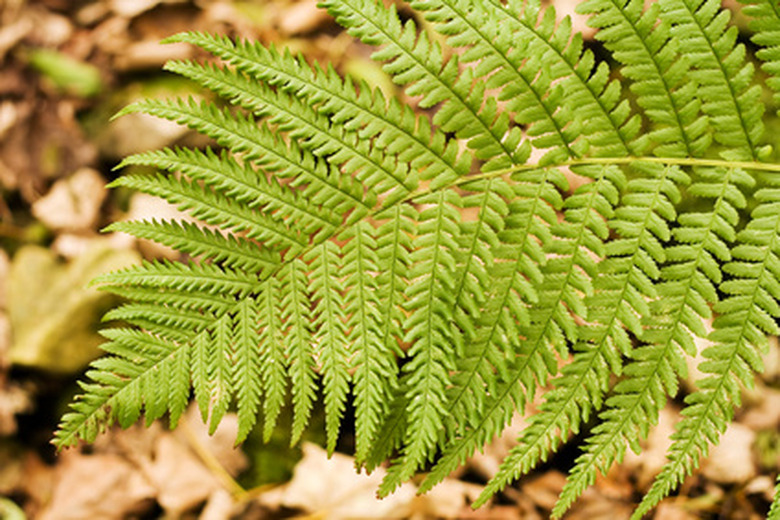Types Of Non Flowering Plants
Types of non-flowering plants include those which create spores or function through asexual reproduction. Though the majority of flora belongs to the flowering category, non-flowering plants exist in many forms and are significant contributors to natural ecosystem cycles.
Ferns
Ferns are one category of non-flowering plants. Though they have no flowers, these plants do have root systems, rhizoids (underground stems), and leaves. Capable of photosynthesis (a plant's conversion of energy from the sun into the production of food), ferns reproduce through the expulsion of millions of spores. Spores are seed-like entities that grow into fern plants when they land within the necessary moist soil environment, according to the Iowa State University Extension. Generally displaying clusters of leaflets in green, red and brown hues and reaching heights of several inches to several feet, examples of these non-flowering plants include, but are not limited to: maidenhair fern (Adiantum pedatum) and lady fern (Athyrium felix-femina).
- Types of non-flowering plants include those which create spores or function through asexual reproduction.
- Though they have no flowers, these plants do have root systems, rhizoids (underground stems), and leaves.
Mosses
Mosses are another type of non-flowering plant. Though they have no flowers, mosses do have leaves, stems, and underground rhizomes. Often clumping together to form a carpet-like ground cover, moss plants generally reach a height of 2 inches or less. Like ferns, mosses reproduce through the release of spores that thrive in shaded, moist areas; the resulting plant may grow to cover an area of several square inches, as explained by the Iowa State University Extension. With an ability to retain twice as much weight in water as its natural weight, an example of these sponge-like, non-flowering plants is star moss.
Liverwort
Liverwort is a type of non-flowering plant. Much like moss, liverwort clings to the ground, mainly on the surface of rocks. Liverworts display green, leaf-like scales, stalks, and a rhizoid network that binds the inferior areas of the plant to the environment beneath it, according to the Iowa State University Extension. Dependent on photosynthesis, these non-flowering plants reproduce sexually with an ultimate result of a release of fertilized spores.
- Mosses are another type of non-flowering plant.
- Like ferns, mosses reproduce through the release of spores that thrive in shaded, moist areas; the resulting plant may grow to cover an area of several square inches, as explained by the Iowa State University Extension.
Algae
Algae are classified as non-flowering plants. Algae plants have no flowers, stems, leaves, or rhizoids. Instead of these typical structures, algae consists of strands or individual cells. Generally displaying a green color due to their high content of chlorophyll (the substance in plants that assists in converting sunlight into energy), algae depend on photosynthesis and are seen covering wet areas such as rocks in streams and the surface of lakes. Algae feed marine life as well as animals that prey on marine life; algae is considered to be one of the most significant plants in existence because it forms the basis of the earth's healthy food chain, according to the Iowa State University Extension.
